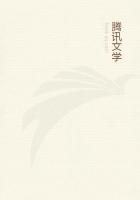Because these are what botanists term polygamous flowers, i.e., some of them are perfect, containing both stamens and pistils;some are male only others, again, are female.Naturally an insect, like ourselves, is first attracted to the more beautiful male blossoms, the pollen bearers, and of course it transfers the vitalizing dust to the dull pistillate flowers visited later.But the meadow-rue, which produces a superabundance of very light, dry pollen, easily blown by the wind, is often fertilized through that agent also, just as grasses, plantains, sedges, birches, oaks, pines, and all cone-bearing trees are.As might be expected, a plant which has not yet ascended the evolutionary scale high enough to economize its pollen by ****** insects carry it invariably, overtops surrounding vegetation to take advantage of every breeze that blows.
The EARLY MEADOW-RUE (T.dioicum), found blooming in open, rocky woods during April and May, from Alabama northward to Labrador, and westward to Missouri, grows only one or two feet high, and, like its tall sister, bears fleecy, greenish-white flowers, the staminate and the pistillate ones on different plants.These produce no nectar; they offer no showy corolla advertisement to catch the eye of passing insects; yet so abundant is the dry pollen produced by the male blossoms that insects which come to feed on it must occasionally transfer some, albeit this primitive genus still depends largely on the wind.Not its flower, but the exquisite foliage resembling sprays of a robust maidenhair fern, is this meadow-rue's chief charm.
The PURPLISH MEADOW-RUE (T.purpurascens), so like the tall species in general characteristics that one cannot tell the dried and pressed specimens of these variable plants apart, is easily named afield by the purplish tinge of its green polygamous flowers.Often its stems show color also.Sometimes, not always, the plant is downy, and the comparatively thick leaflets, which are dark green above, are waxy beneath.We look for this meadow-rue in copses and woodlands from Northern Canada to Florida, and far westward after the early meadow-rue has flowered, but before the tall one spreads its fleecy panicles.
Quite as decorative as the flower clusters are the compound seed-bearing stars.
TWIN-LEAF; RHEUMATISM ROOT
(Jeffersonia diphylla) Barberry family Flowers - White, 1 in.broad, solitary, on a naked scape about 7in.high in flower, more than twice as tall in fruit.Calyx of 4petal-like sepals falling early; 8 longer, flat, oblong petals; 8stamens; 1 pistil.Leaves: From the root, long-petioled, rounded, palmately veined, cleft into 2 divisions.Fruit: A leathery, many-seeded capsule, slit horizontally.
Preferred habitat - Rich shady woods.
Flowering Season - April-May.
Distribution - New York to Virginia, west to Ontario and Tennessee.
Like many little darkies in the United States, this low plant was named for Thomas Jefferson.One suspects from a glance at its solitary white flower and deeply divided leaves that it is not far removed from the May apple, which is characterized by even greater Jeffersonian simplicity of habit, although separated into another genus.
MAY APPLE; HOG APPLE; MANDRAKE; WILD LEMON(Podophyllum peltatum) Barberry family Flowers - White, solitary, large, unpleasantly scented, nodding from the fork between a pair of terminal leaves.Calyx of 6short-lived sepals; 6 to 9 rounded, flat petals stamens as many as petals or (usually) twice as many; 1 pistil, with a thick stigma.Stem: 1 to 1 1/2 ft.high, from a long, running rootstock.Leaves: Of flowerless stems (from separate root-stock), solitary, on a long petiole from base, nearly 1 ft.
across, rounded, centrally peltate, umbrella fashion, 5 to 7lobed, the lobes 2-cleft, dark above, light green below.Leaves of flowering stem 1 to 3, usually a pair, similar to others, but smaller.Fruit: A fleshy, yellowish, egg-shaped, many-seeded fruit about 2 in.long.
Preferred habitat - Rich, moist woods.
Flowering Season - May.
Distribution - Quebec to the Gulf of Mexico, westward to Minnesota and Texas.
In giving this plant its abridged scientific name, Linnaeus seemed to see in its leaves a resemblance to a duck's foot (Anapodophyllum) but equally imaginative American children call them green umbrellas, and declare they unfurl only during April showers.In July, a sweetly mawkish, many-seeded fruit, resembling a yellow egg-tomato, delights the uncritical palates of little people, who should be warned, however, against putting any other part of this poisonous, drastic plant in their mouths.
Physicians best know its uses.Dr.Asa Gray's statement about the harmless fruit "eaten by pigs and boys" aroused William Hamilton Gibson, who had happy memories of his own youthful gorges on anything edible that grew."Think of it, boys!" he wrote; "and think of what else he says of it: 'Ovary ovoid, stigma sessile, undulate, seeds covering the lateral placenta each enclosed in an aril.' Now it may be safe for pigs and billygoats to tackle such a compound as that, but we boys all like to know what we are eating, and I cannot but feel that the public health officials of every township should require this formula of Dr.Gray's to he printed on every one of these big loaded pills, if that is what they are really made of."BLOODROOT; INDIAN PAINT; RED PUCCOON
(Sanguinaria Canadensis) Poppy family Flowers - Pure white, rarely pinkish, golden centered, 1 to 1 1/2in.across, solitary, at end of a smooth naked scape 6 to 14 in.
tall.Calyx of 2 short-lived sepals; corolla of 8 to 12 oblong petals, early falling; stamens numerous; 1 short pistil composed of 2 carpels.Leaves: Rounded, deeply and palmately lobed, the 5to 9 lobes often cleft.Rootstock: Thick, several inches long, with fibrous roots, and filled with orange-red juice.
Preferred habitat - Rich woods and borders; low hillsides.
Flowering Season - April-May.















